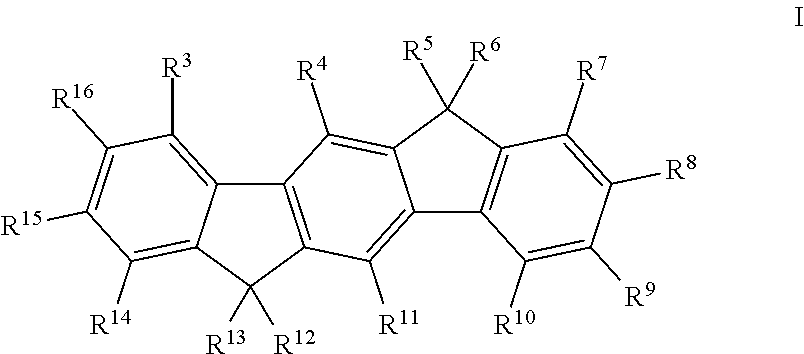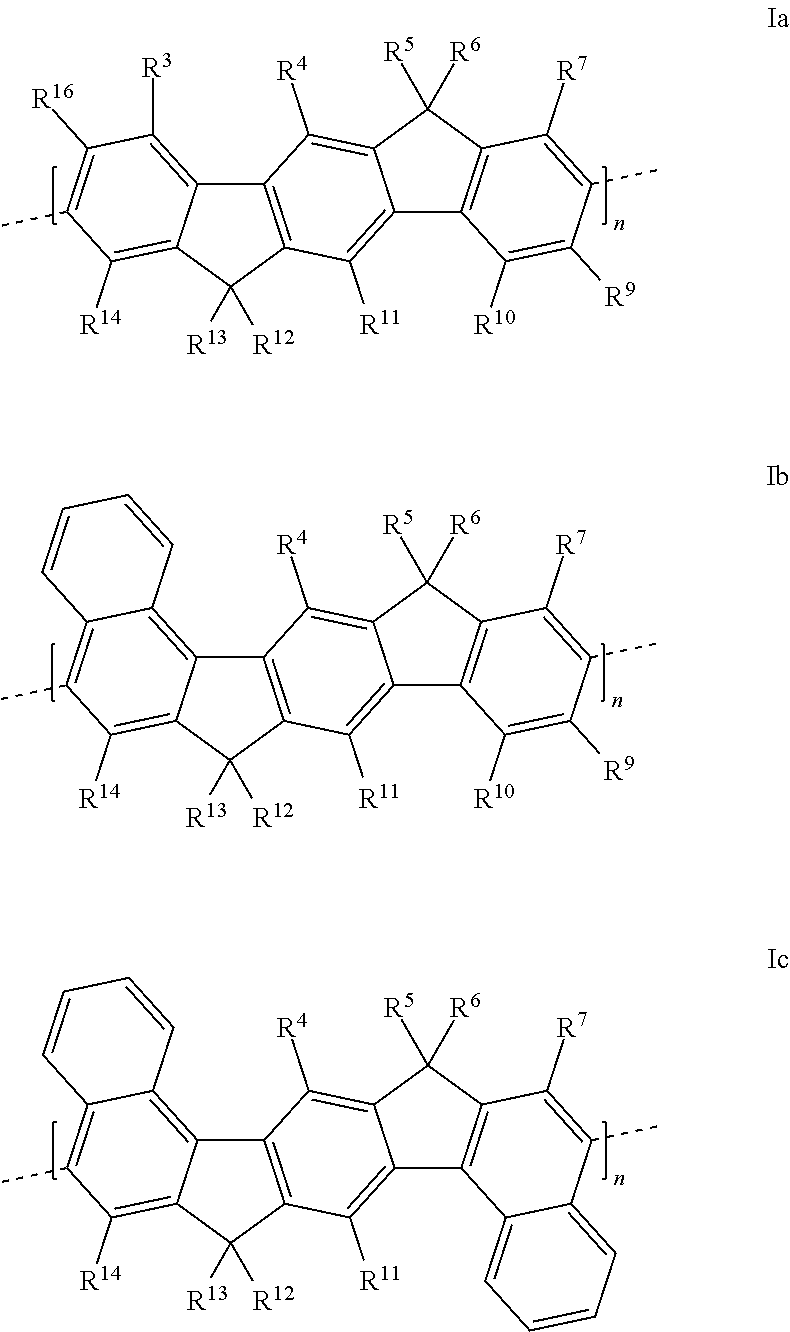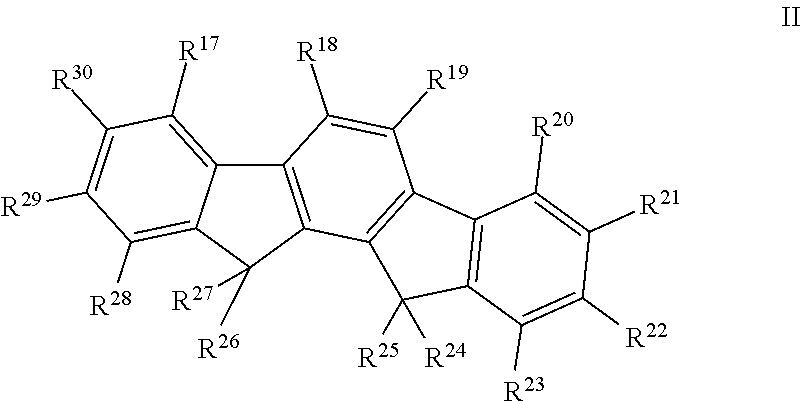Polymers comprising structural units which contain alkylalkoxy groups, blends comprising these polymers, and opto-electronic devices comprising these polymers and blends
a technology of structural units and polymers, which is applied in the direction of non-metal conductors, organic conductors, luminescent compositions, etc., can solve the problems of low efficiency, low efficiency, and low operating voltage of such systems
- Summary
- Abstract
- Description
- Claims
- Application Information
AI Technical Summary
Benefits of technology
Problems solved by technology
Method used
Image
Examples
working examples
[0116]In Examples 1 to 4, monomers which are preferred in accordance with the invention, or precursors thereof, are prepared. In Examples 5 to 7, polymers which are preferred in accordance with the invention and corresponding comparative polymers are prepared. In Examples 8 to 11, blends which are preferred in accordance with the invention are prepared.
A) Examples 1 to 4
Synthesis of the Monomers
example 1
Preparation of 1-bromo-4-(3-ethoxypropyl)benzene 3
[0117]
Step 1: 3-(4-Bromophenyl)propionic acid 1
[0118]
[0119]45.25 g (1 molar equivalent, 0.4 mol) of 2,2,4-trimethyl-2-oxazoline are initially introduced in 1000 ml of THF and cooled to −78° C. under a protective gas. A solution of 160 ml (1 molar equivalent, 0.4 mol) of 2.5 M n-butyllithium in hexane is slowly added dropwise. After 1 hour, 99.9 g (1 molar equivalent, 0.4 mol) of 4-bromobenzyl bromide, dissolved in 100 ml of THF, are slowly added dropwise. The solution is brought to room temperature overnight. The solution is concentrated to 200 ml, the organic phase is extracted with ether and 10% HCl solution, and the aqueous phase is neutralised using 40% NaOH solution and then likewise extracted with ether. The organic phase is washed with sodium chloride solution, dried over sodium sulfate and evaporated in vacuo. The oil is warmed under reflux for 2 hours with 500 ml of 10% HCl and cooled overnight. The product 1 is filtered off...
example 2
Preparation of 1-bromo-4-(butyl benzyl alcohol) 4
[0128]
Step 1: 1-Bromo-4-(butyl benzyl alcohol)
[0129]
[0130]60% sodium hydride as a dispersion in oil is initially introduced in a well-dried four-necked flask, and 600 ml of abs. THF are added under argon. The reaction mixture is cooled to 0° C., and a solution of n-butanol in 150 ml of THF is slowly added dropwise at such a rate that the temperature does not exceed 3° C. p-Bromobenzyl bromide is dissolved in 250 ml of THF and subsequently slowly added dropwise at such a rate that the temperature does not exceed 5° C. The reaction mixture is slowly warmed to room temperature, and stirring is continued overnight at room temperature. Cold water is carefully added dropwise, and the mixture is stirred for a further 30 minutes. The phases are separated. The water phase is washed with dichloromethane. The organic phase is extracted with water, dried over sodium sulfate, filtered, and the solvent is removed under reduced pressure. The oil obt...
PUM
| Property | Measurement | Unit |
|---|---|---|
| atomic number | aaaaa | aaaaa |
| mol % | aaaaa | aaaaa |
| mol % | aaaaa | aaaaa |
Abstract
Description
Claims
Application Information
 Login to View More
Login to View More - R&D
- Intellectual Property
- Life Sciences
- Materials
- Tech Scout
- Unparalleled Data Quality
- Higher Quality Content
- 60% Fewer Hallucinations
Browse by: Latest US Patents, China's latest patents, Technical Efficacy Thesaurus, Application Domain, Technology Topic, Popular Technical Reports.
© 2025 PatSnap. All rights reserved.Legal|Privacy policy|Modern Slavery Act Transparency Statement|Sitemap|About US| Contact US: help@patsnap.com



